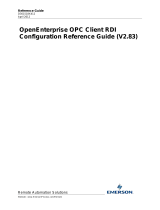
Contents:
1. About this manual .................................................................................. 5
1.1. Copyrights ...................................................................................... 5
1.2. Trademarks .................................................................................... 5
1.3. General .......................................................................................... 5
1.4. Document conventions .................................................................. 6
1.5. Use of symbols .............................................................................. 6
1.6. Terminology .................................................................................... 7
1.7. Abbreviations ................................................................................. 8
1.8. Related documents ........................................................................ 9
1.9. Document revisions ..................................................................... 10
2. Product overview .................................................................................. 11
2.1. About this section ......................................................................... 11
2.2. Product overview ......................................................................... 11
2.3. Features ....................................................................................... 12
2.3.1. Gateway functionality .................................................... 12
2.3.2. HMI ................................................................................ 14
2.3.2.1. HMI functions ............................................. 14
2.3.2.2. Predefined user account ............................ 15
2.3.3. OPC server ................................................................... 15
2.3.4. OPC client ..................................................................... 16
2.3.5. IEC 61850 data modelling ............................................. 17
2.3.6. Station/Remote switch function ..................................... 19
2.3.7. COM600 Watchdog ....................................................... 20
2.3.8. External watchdog for COM600 .................................... 20
2.3.9. Network Fault Tolerance for COM600 ........................... 20
2.3.10. Queuing of Process Data Updates ............................... 21
2.4. Hardware ..................................................................................... 22
2.4.1. Mechanical properties ................................................... 22
2.4.2. Mounting of COM600 computer .................................... 23
2.4.3. Setting up the COM 2 port for RS-232/RS-485 ............ 24
3. Installation ............................................................................................. 26
3.1. About this section ......................................................................... 26
3.2. Requirements for Communication Engineering Tool ................... 26
3.3. Installing Communication Engineering Tool ................................. 26
3.4. Updating CET .............................................................................. 27
3.5. Setting up the COM600 computer ............................................... 27
3.5.1. Accessing the COM600 computer ................................ 27
3.6. Uninstalling Communication Engineering Tool ............................ 30
3.7. Turning off COM600 computer ..................................................... 31
4. Configuration ........................................................................................ 32
3
COM600 3.2
COM600 Station Automation Series1MRS756125
User's Guide
Issued: 16.10.2006
Version: E/17.06.2008




















